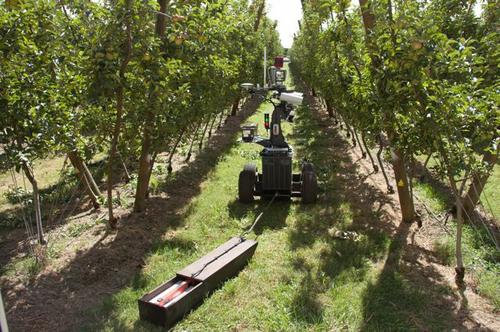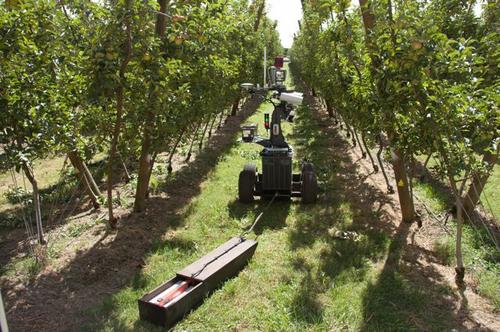July 16, 2013

Researchers at the University of Sydney are giving the booming Australian agricultural industry some help by developing two robots designed to help monitor crops and provide valuable information to farmers.
Salah Sukkarieh, a professor of robotics and intelligent systems and a researcher at the university's Australian Centre for Field Robotics, told us in an email that the robots, Mantis and Shrimp, were adapted from mining and security projects that researchers have worked on for five years.
The Australian farming industry is finding it hard to cope with both lack of labor availability and high labor costs. Most farmers need help especially around harvesting time when they need lots of workers for short periods of time. Robotics and various forms of intelligent software will help farmers know more about their farm and crop health, which will in turn help them make more informed decisions.

The Australian robots are reminiscent of a project we discussed last summer, Clever Robots for Crops. Researchers in a number of European countries are working on an robotic platform that can spray certain types of plants or foliage or can select and harvest fruit by identifying the right time to pick.
Shrimp and Mantis have similar characteristics, Sukkarieh said. Electric vehicles with a range of sensors (including vision, laser, thermal, and radar) travel between rows of crops and collect lots of data. "For their agriculture role, we've developed various data fusion and machine-learning algorithms that do things like segment trees out of the data, identify fruit, yield count, etc." The robots can be controlled via smartphone or can run autonomously.
Horticulture Australia Ltd. has helped fund the research. Trials on various farms in Australia have produced positive results. "The robots themselves have been working really well and farmers get a kick out of seeing them on the farm. The real interest starts to show when we demonstrate automatic fruit detection."
The next step is to fine-tune the algorithms for different fruit varieties. The ultimate aim is for the robots to detect and classify fruit ripeness so they can harvest crops.
The University of Sydney team is working on similar automated technology for standard farm tractors. This technology would perceive and analyze the environment and direct the tractor to apply fertilizers and pesticides, water, sweep, or mow.
Related posts:
About the Author(s)
You May Also Like



